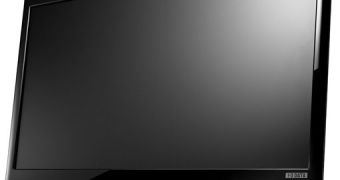One aspect of the IT industry is that it is always evolving. The other is that it has always been among the primary sources of toxic waste, otherwise known as e-waste. Electronics have a certain lifespan, after which they get defected and inevitably end up in garbage dumps. Some products get recycled, but there is a range of materials and substances that can be classified as toxic through their very nature. These substances have the potential of turning any product, at least partially, into the bane of life. LCDs have long been among the top-ranking potentially hazardous items on the market.
Liquid Crystal Displays classify as hazardous because they utilize a range of toxic chemicals, such as halogens and mercury, among other things. Granted, makers of such devices have come up with ecological substitutes for most of them, as is evident by the various Green LCDs on sale. PVA, however, the polyvinyl-alcohol inside LCD TVs and monitors, cannot so easily be replaced. Knowing this, a team of scientists from the University of York decided they would, instead, make something useful out of it.
Apparently, heating the PVA, then cooling and dehydrating it with ethanol leads to the appearance of a surface area of mesoporous material. This material has a high medicinal potential because, either on its own or when combined with silver nanoparticles, it can slay microbes, and even more troublesome life-ending things such as E.coli.
“Now we have gone a step further by enhancing its anti-microbial properties through the addition of silver nanoparticles, with the result being that it can destroy bacterial infections such as E.coli. Potentially, it could be used in hospital cleaning products to help to reduce infections,” said Dr. Hunt of the York Green Chemistry Centre of Excellence.
This discovery is only in its beginning stages, unfortunately, which means it will still take a while before LCDs actually become pills. On the other hand, this development is a great reassurance, especially considering that LCDs are approaching the end of their life and are the fastest growing waste in Europe.

 14 DAY TRIAL //
14 DAY TRIAL //